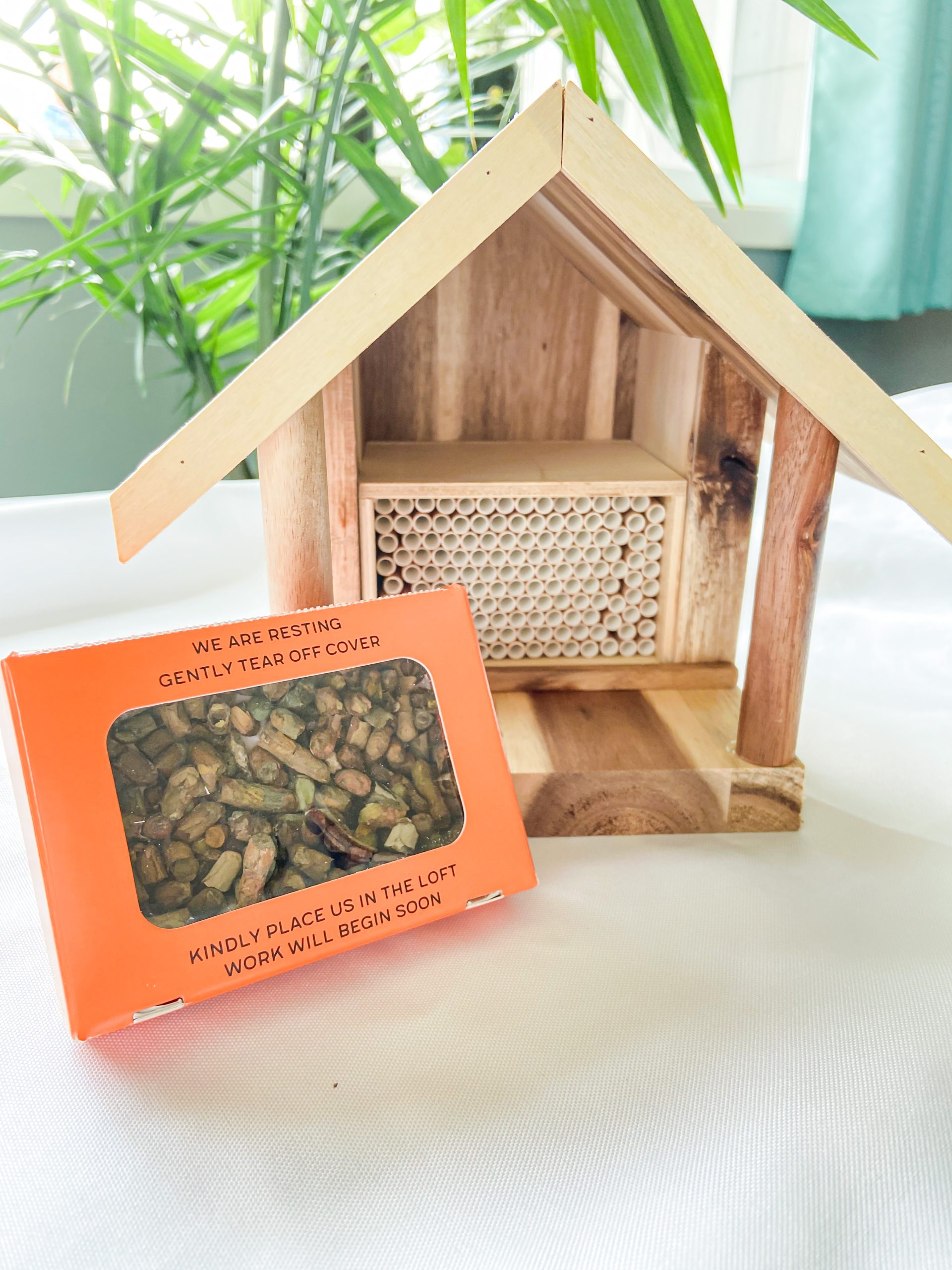The key to a successful and bountiful harvest isn’t just fertilizer or careful weeding— it’s also pollination. Bees are the true gardeners of the natural world, but unfortunately, their numbers are dwindling worldwide.
Here at Kind Bee Farms, we are deeply committed to introducing pollinators into the gardens and farms across the USA and Canada through our all-in-one Pollinator House Kit. We raise Leafcutter Bees (Megachile rotundata), also known as super pollinators.
Keep reading to learn all about Kind Bee Farm’s leafcutter bee basics for the USA!
Leafcutters Thrive in the Heat
Leafcutter bees love hot weather and thrive in hot climates that regularly reach 100°F (35°C) or hotter. They love the early morning sun. You will find them flying and pollinating during the heat of the day, but make sure their Bee Home faces the east/southeast as the morning sun will warm them up for a full day of pollinating.
Our gentle bees do not like overcast or cloudy weather. During this time you will find them tucked inside their warm home, but be assured that as soon as the sun shines bright, they will be out hard at work buzzing from flower to flower.
The Best States for Leafcutter Bees
American farmers use leafcutters to pollinate their fields in many states, such as Arizona, California, Colorado, Idaho, Montana, Nevada, Oregon, Texas, Utah, Wyoming, Wisconsin, Washington, and many more sunny states.
Your garden’s flowers and plants must in bloom before your bees get shipped. Finding the perfect time to order your bees depends on your state and region’s planting zone, but typically, the ideal time is April to August. The south gets very hot in late summer, so we recommend buying your bees for May/June.
Best Blooms for the Bees
While they are tiny in size, leafcutter bees pack a serious pollination punch— it takes 1 leafcutter bee to pollinate the same amount as 20 honey bees, giving them their famed name of “super pollinators”.
Leafcutters are fast, nimble and low-flying bees. They prefer bushes, shrubs, short trees and, of course, garden beds. Leafcutter bees love tomatoes, peas, cucumbers, blueberries, and many more flowers found in your garden. With their help, your garden will flourish, growing plump, lush fruits and vegetables.
Set their leaf cutting up for success by planting plenty of flowering plants both edible and ornamental. You may want to try planting salvia, zinnias, borage, and wildflowers just to list a few. Be sure to check your region’s zones before planting!
Why do they cut leaves?
Leafcutter bees are the interior decorators of the bee society! The half-moon leaves they cut are used as a protective cocoon to deposit a fertilized egg. The hard-working Mama Bee deposits a store of pollen and nectar to nourish the developing larvae while they lay dormant in the winter.
To keep out predators, the nesting tube is sealed with layers of perfectly cut circular leaves. When the baby bees hatch from their cocoons, they chew through the plug to sweet, sweet freedom!
The Leafcutter Life Cycle & Personality
Male leafcutter bees hatch first with a lifespan of 10-14 days! They are here for a good time, not a long time. Whereas the female bees hatch around day 21-23, with a lifespan of 60 days. They are the workers in the family, and will keep you and your garden company all summer long.
We call them Kind Bees for a reason– leafcutter bees are solitary, non-aggressive, and docile bees. They are great for everyone in your family, including children! These gentle Mama Bees make wonderful garden companions.
Experience the Power of Pollination!
Are you ready for the best growing season your garden has ever seen? Get in touch with Kind Bee Farms, or pre-order your pollination house kit today!

